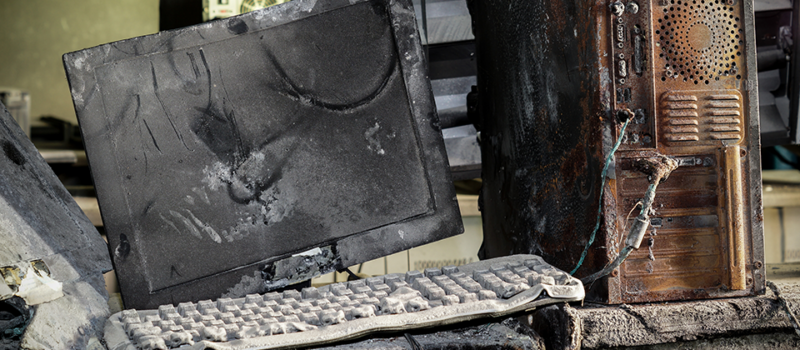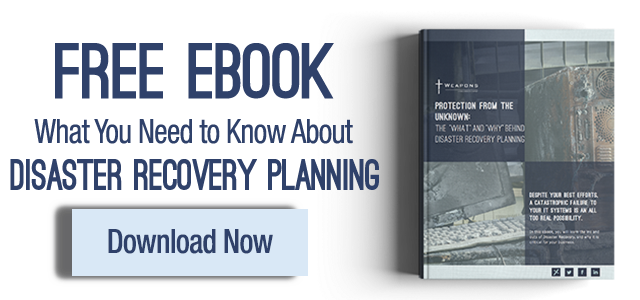Ask yourself, if you didn’t have to have car insurance, would you still get it? For most responsible adults, the answer is probably yes, however, there would definitely be far more uninsured drivers on the road if they weren’t required to get insurance by law. The concept of insurance can be frustrating. You pay handsomely each month for something you might actually never need….until, unfortunately, you do need it. The same concept is true for a Disaster Recovery Plan and Business Continuity. Why should I invest time and money into a hypothetical situation?
While the investment for car, life, and homeowners insurance may seem steep, it is a small price to pay when you consider the alternatives. The same can be said about a disaster recovery plan. The simple truth about disaster recovery is that for every hour that your technology systems are down, your business loses money. While most technology and business leaders know that disaster recovery is important, a lot of them decide to know not fully pursue it due to the initial investment. Also, many executives miss understand what real disaster recovery planning is, and think that cloud backups and and a generator will do the trick. Eventually, if your business is down long enough, you may never be able to recover. Considering the following 3 causes of downtime that a proper disaster recovery plan can help you avoid.
Natural Disaster
When most people think about disaster recovery planning, they think about storms, hurricanes, and tornadoes. Disaster recovery plans are designed to keep backups of your data and move your critical technology systems and applications instantly to another location so that your employees can continue working and your data isn’t lost forever. In the past 10 years, North American businesses have seen what nature can do, with such disasters as Super Storm Sandy, the Fort McMurray and British Columbia wildfires, and tropical storm Harvey that leveled businesses. During these events, many companies were simply not able to recover due to the complete loss of data and information. Disaster Recovery plans, at the very least, let you know that proper backups of your data exist. However, it is important to remember that data backups only represent a portion of a proper disaster recovery plan, and will only save your data and not your critical applications such as email, finance systems, and other business apps.
Uninhabitable Building
There are many different scenarios that could render your primary work facility unusable, such as a bomb threat, gas leak, water outage, power failure, structure damage, or fire. Besides data backups, true business continuity plans involve having another location or alternate workspace for your team to continue working. Many companies today use VDI and cloud technology that would allow employees to access critical applications from home if they can’t make it into work, which could save your business in the event your office cannot be accessed. However, you still need to make sure that you have critical applications in the event of a disaster.
Human Error
In a recent study, it was discovered that 48% of data centre downtime was caused by human error. Many innocent issues can cause downtime, such as a major technology configuration gone wrong or a bad line of code. Disaster recovery can help avoid significant downtime due to human error by having a solid backup option. Often, human error mistakes can be hard, and take time, to discover and fix, and having a Plan B can help you make sure that you can stay online and operational no matter what life, and accident prone employees, throw at you.





